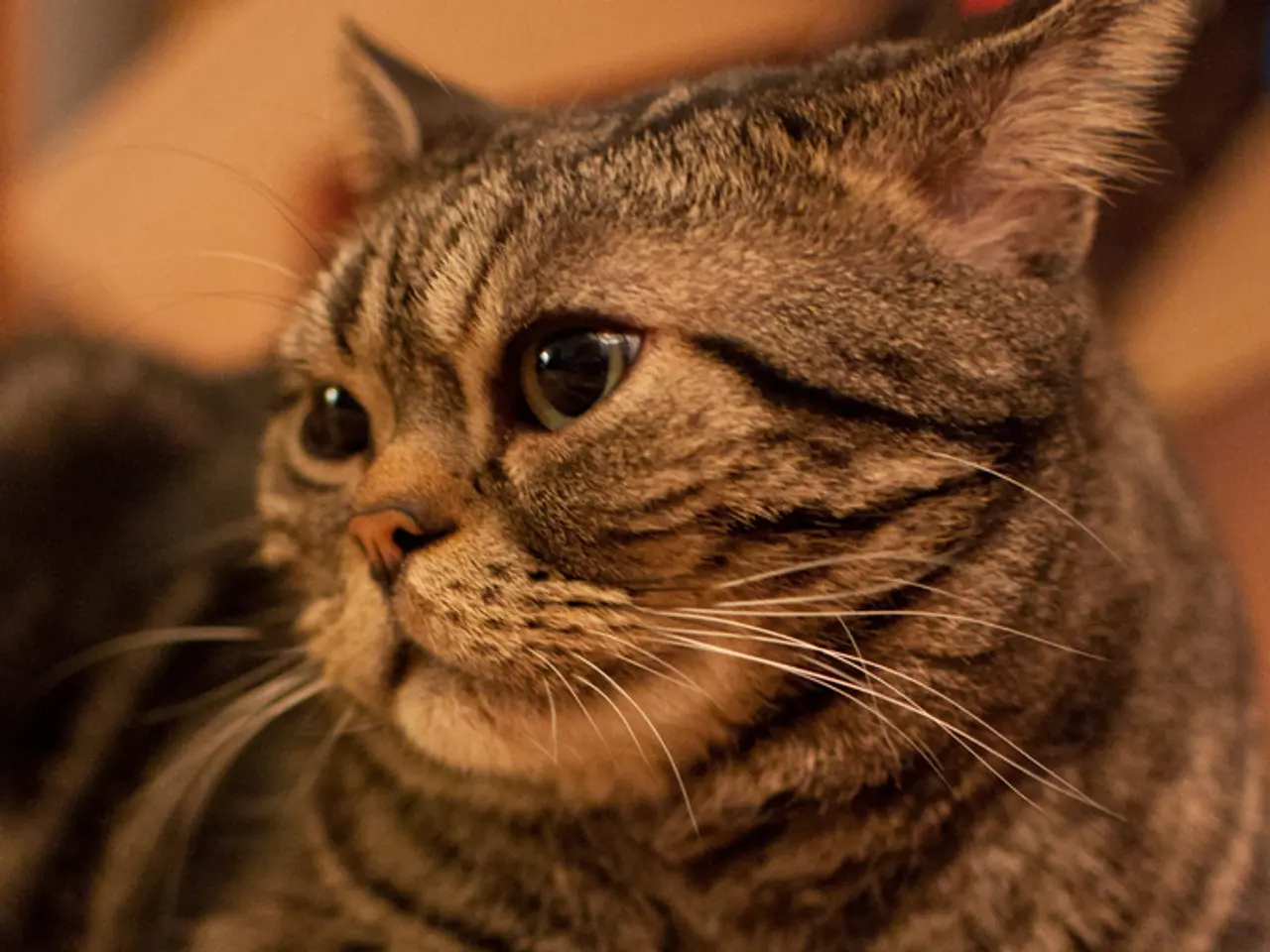Cats undergo estrous cycles, as opposed to menstrual periods in humans.
Understanding the Differences Between a Cat's Estrus Cycle and a Human's Menstrual Cycle
Cats and humans share many similarities, but their reproductive cycles are quite distinct. A cat's estrus cycle, also known as the heat or mating cycle, and a human's menstrual cycle, each have unique characteristics that set them apart.
In contrast to the human menstrual cycle, which usually occurs about once a month, a cat's estrus cycle is polyestrous, meaning it can have multiple heats per year, especially during breeding seasons. Cats are induced ovulators, which means they release eggs only after mating, and without mating, they do not ovulate. The estrus stage lasts about 2 to 19 days, followed by an interestrus phase if mating does not occur, before the cycle repeats.
On the other hand, humans are spontaneous ovulators, meaning ovulation happens cyclically without external stimulation. The human menstrual cycle involves a regular, spontaneous ovulation around the mid-cycle, regardless of mating or pregnancy. Women shed the uterine lining through menstruation if pregnancy does not occur, which is the visible menstrual period.
Here's a comparison of the key differences:
| Aspect | Cat Estrus Cycle | Human Menstrual Cycle | |-------------------------------|--------------------------------------------------|-----------------------------------------------| | Cycle type | Polyestrous (multiple heats per year) | Typically monthly cycles (~28 days) | | Ovulation | Induced ovulators (ovulate after mating) | Spontaneous ovulators (regular ovulation) | | Visible bleeding/period | No menstruation or uterine lining shedding | Menstruation involves shedding uterine lining | | Heat/sexual receptivity | During estrus (heat), lasts 2–19 days | Sexual receptivity not confined to a phase | | Cycle phases | Proestrus, estrus, interestrus, diestrus, anestrus | Follicular phase, ovulation, luteal phase, menstruation | | Gestation duration | About 63–65 days | About 280 days (9 months) |
It's important to note that bleeding from a female cat's genital area is not normal and may indicate a medical issue. If a female cat is bleeding, it's recommended to contact a vet immediately. Cats can reach sexual maturity and begin their first heat cycle as early as four to six months of age.
Spaying a female cat helps prevent unwanted pregnancies and behaviors associated with the heat cycle. Spaying also provides proven health benefits and reduces behavioral stress. Spaying helps manage the broader issue of stray cat populations, as it reduces the number of unspayed cats that may contribute to the problem.
Indoor cats with artificial light may go into heat more frequently than outdoor cats. In warmer regions, or when exposed to consistent light, cats may experience heat cycles year-round.
References: [1] Cornell Feline Health Center. (n.d.). Feline Reproductive System. Retrieved from https://www.vet.cornell.edu/departments-centers-and-institutes/cornell-feline-health-center/health-information/feline-health-topics/feline-reproductive-system [2] Merck Veterinary Manual. (2021). Reproductive System Disorders of Cats. Retrieved from https://www.merckvetmanual.com/cat/reproductive-disorders-of-cats/reproductive-system-disorders-of-cats/reproductive-system-disorders-of-cats [3] PetMD. (2021). Feline Estrus Cycle. Retrieved from https://www.petmd.com/cat/conditions/reproductive/c_ct_feline_estrus_cycle [4] Mayo Clinic. (2021). Menstrual cycle. Retrieved from https://www.mayoclinic.org/healthy-lifestyle/womens-health/in-depth/menstrual-cycle/art-20047361
- Maintaining a healthy home-and-garden environment is essential for both pet cats and humans, as a clean and safe space can positively influence a pet's lifestyle and promote overall wellness.
- The environment plays a crucial role in a cat's reproductive health, as indoor cats with artificial light may experience more frequent estrus cycles. This underlines the importance of understanding a cat's estrus cycle, as it can impact their behavior and overall lifestyle.
- With advancements in technology, increasingly sophisticated veterinary care is available for pets, including procedures like spaying that can offer multiple health benefits to cats, such as preventing unwanted pregnancies and associated behaviors, while also reducing the stray cat population. This highlights the growing role that technology plays in improving our pets' lives and health.




